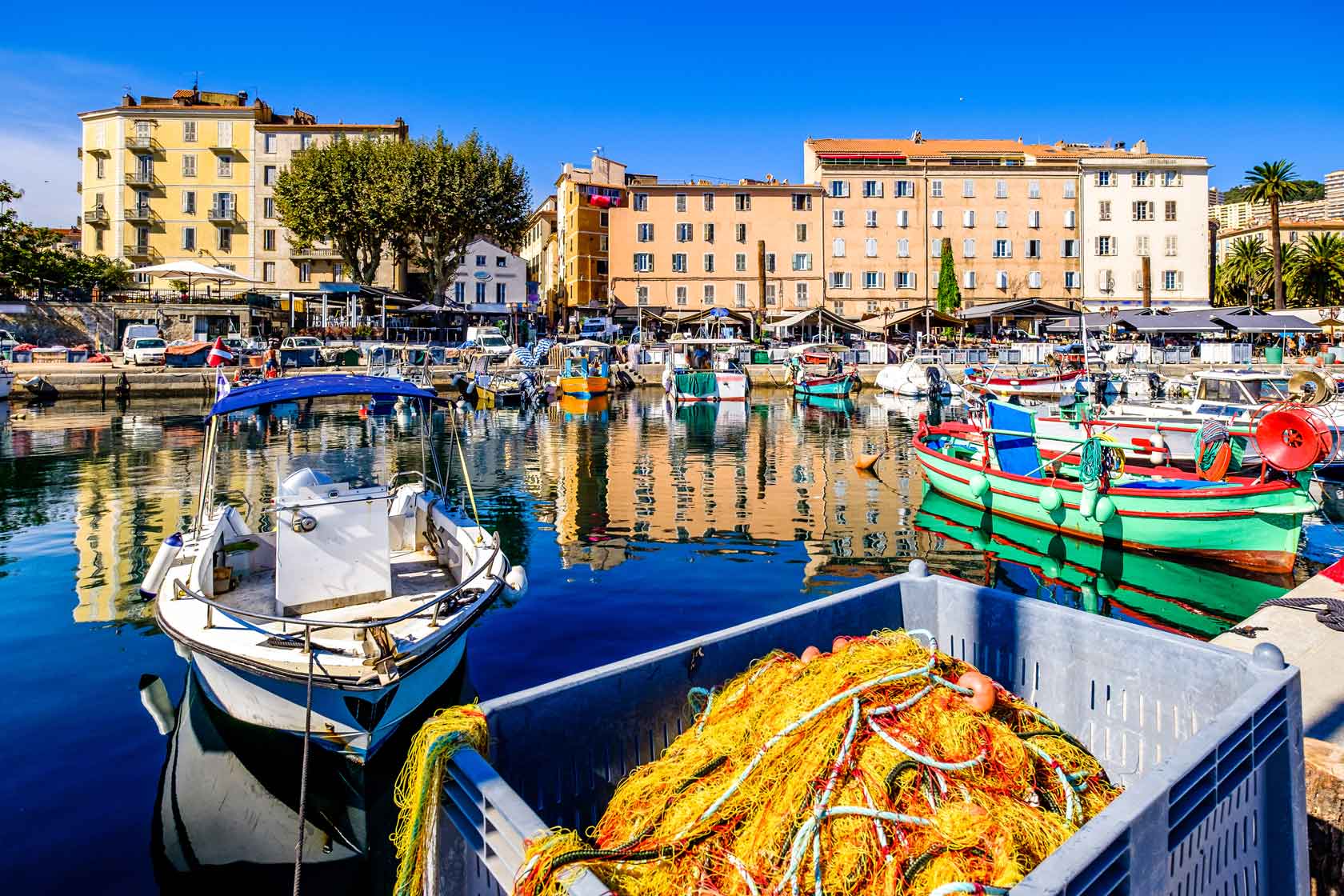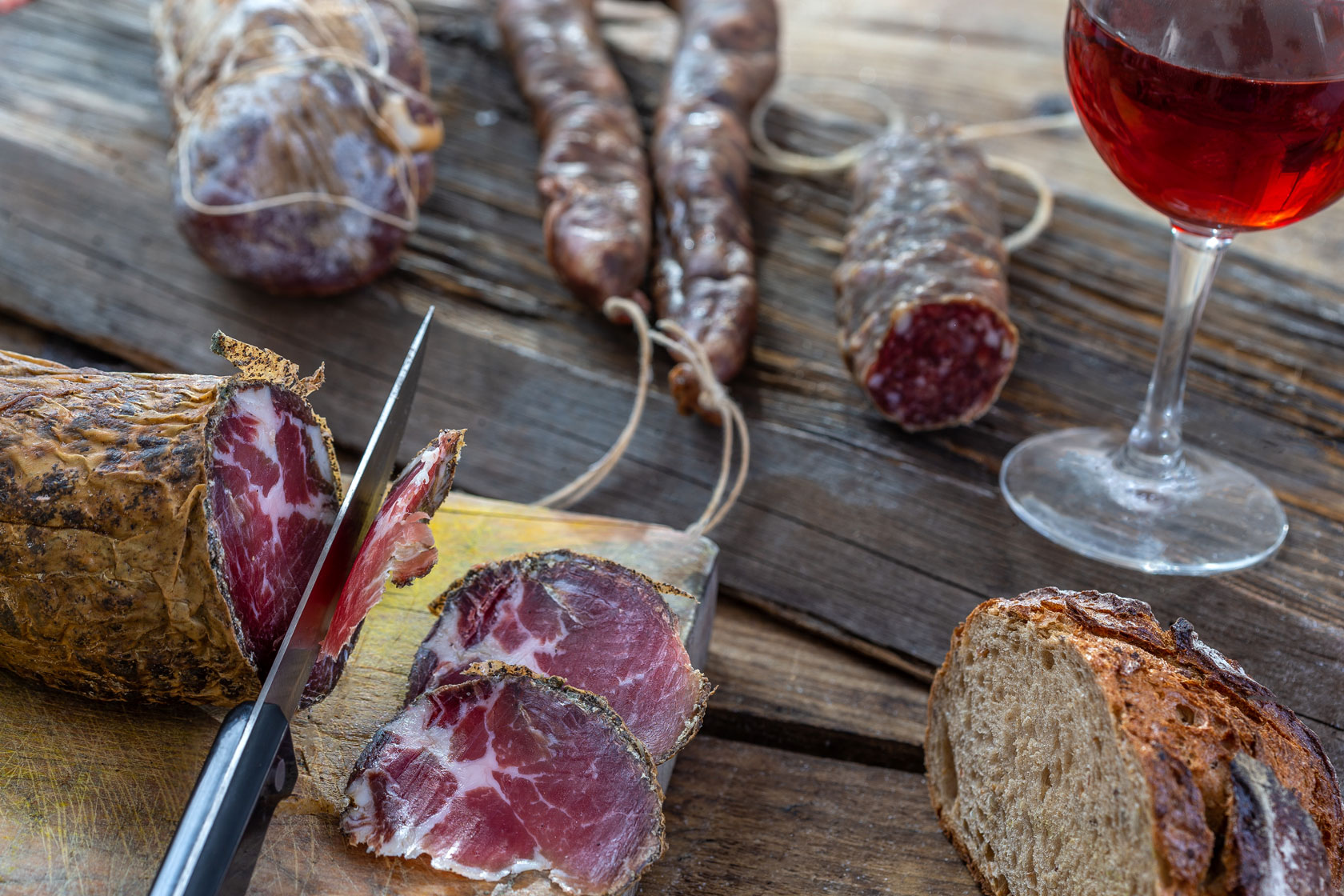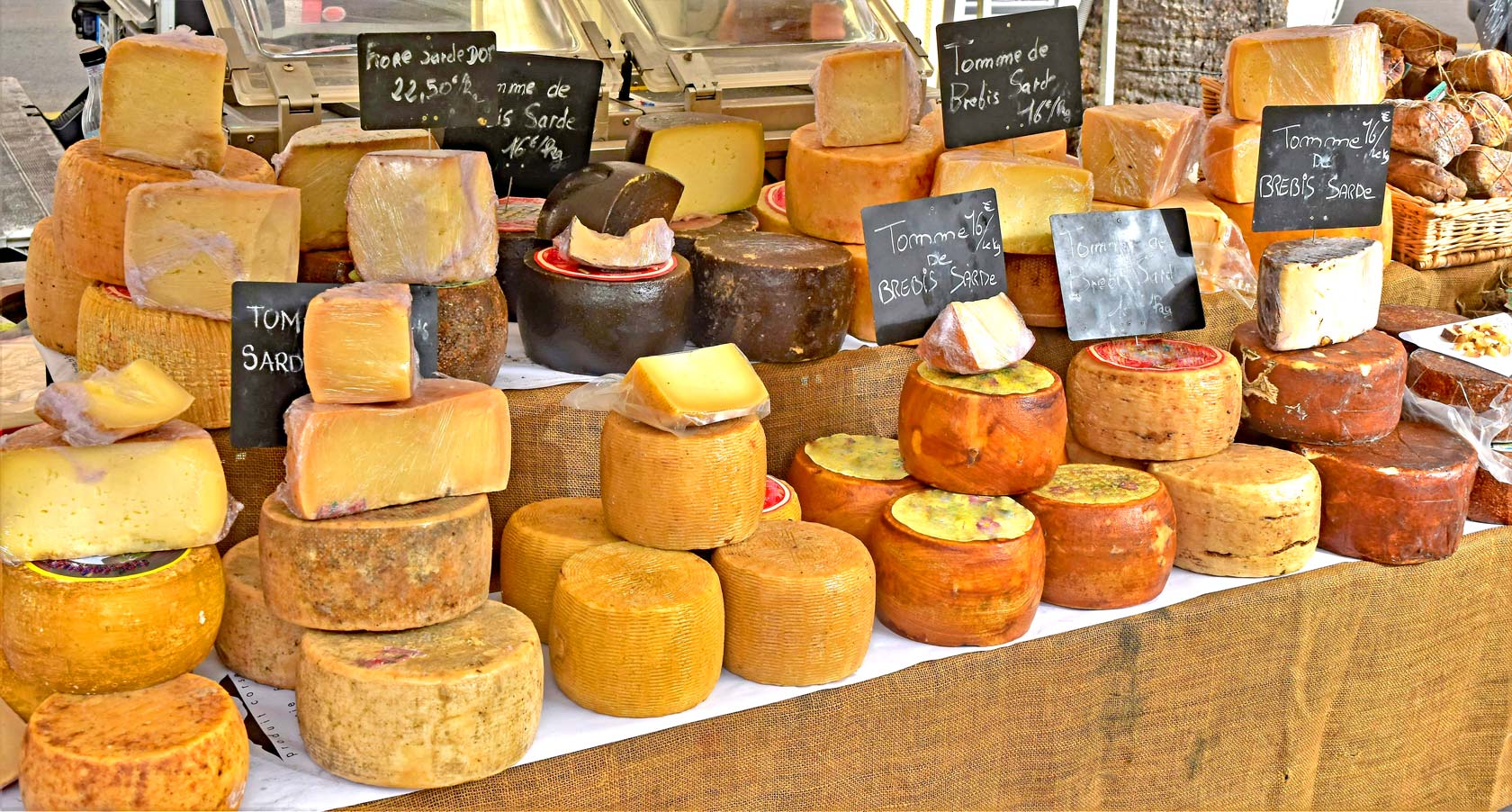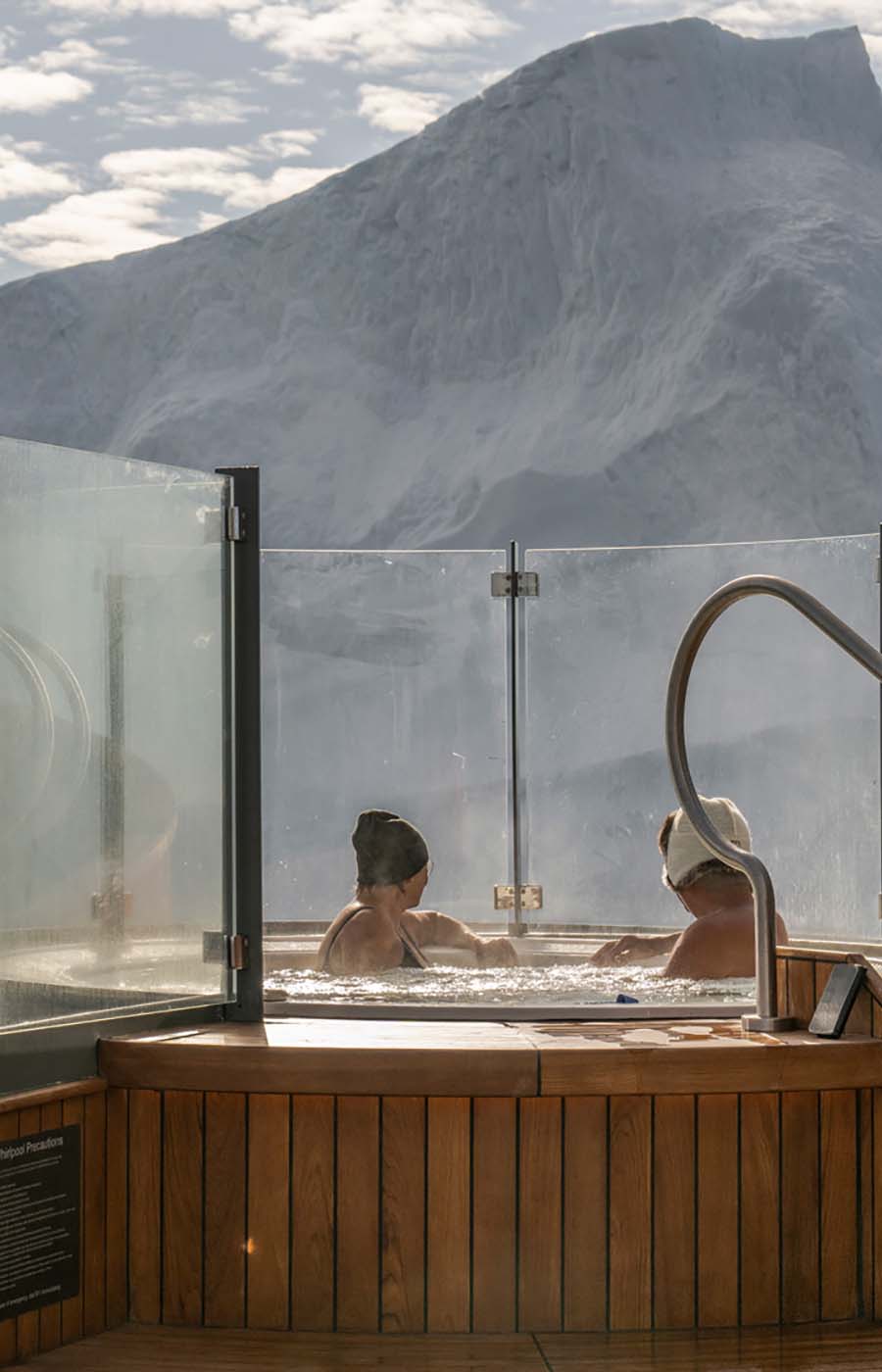The Mediterranean island of Corsica is famous for the boldness and variety of its flavor
Although a part of France, Corsica is physically closer to Italy, and indeed was under Italian rule until 1768. You can still see and hear many traces of that country’s influence on the island, from the watch towers lining the coast to the local language, and you can taste them as well. Corsican food very much has its own identity, as do the wines, which make the most of local varietals.
Key to Corsican cuisine is the quality of the local products: freshness is everything and preparations tend to involve few elements to highlight distinct, bold flavors.
Naturally, seafood is abundant, and a selection of it goes into aziminu, a fish soup that is the Corsican answer to Marseille’s bouillabaisse. Fish like mullet or sea bass is often served whole and simply grilled with fennel and local olive oil, to better bring out its nuances; lobster is another local favorite and is found at many seaside restaurants.
In general, Corsicans prefer meat to seafood and fish — they are mountain people through and through, thanks to a history marked by invaders who pushed local inhabitants away from the coasts and into the fortress-like interior. When dining out, you can sample stews made with wild boar, kid or veal, as well as grilled lamb. The local charcuterie is justly famous as well. The local breed of pigs, known as nustrale, is left semi-free to roam and forage, leading to a healthy diet heavy on acorns, chestnuts and roots. Traditional processing then gives Corsican cured meats a unique flavor. The most common salume includes figatelli (sausages, usually grilled), lonzu, coppa and prisuttu (similar to prosciutto). Many restaurants offer sampler plates that allow you to try a bit of everything. If you want to bring some charcuterie home, it’s best to buy it at one of the local farmers’ markets or from butchers--or at one of the many small independent shops specializing in local products-- that will vacuum-seal your purchases for maximum freshness.
Assertive flavors are a trademark of Corsican cheese, which is generally made from sheep or goat milk by small producers — no large industrial manufacturers here. You can find firm and semi-firm varieties like tomme or bastelicacciu, but the iconic Corsican cheese is the mild, lactose-free and ricotta-like brocciu, a versatile delicacy that can be eaten either as is with a touch of sugar and a splash of myrtle liqueur (a slightly fruity, herbal local favorite also often consumed at the end of a meal). Because fresh brocciu is usually sold November-June, you can usually find its closely related sibling brousse, which will be familiar to those who have been to Provence. In restaurants, brocciu is often mixed with chard and herbs in the stuffed pasta cannelloni or in dumplings called storzapretti, or it’s combined with fresh mint in lunch omelets. It is also the main ingredient in the wonderfully light cheesecake known as fiadone.
As you explore the streets of Ajaccio, Calvi or Bonifacio, you will see fiadone slices in bakeries next to other brocciu delicacies include the small tart known as ambrucciata and migliacci, pancake-like snacks filled with globs of cheese and traditionally baked on chestnut leaves.
Brought over by the Genoese in the 17th century, chestnuts are the soul of mountainous Corsica. They are mostly milled into the flour that is a staple of Corsican pantries. Chestnut flour is used to make cakes, crêpes and pastries, as well as in the hearty winter feast pulenda — the flour is mixed with water, creating a firm block that is then sliced and served with side dishes including slices of brocciu; lamb, veal or wild-boar stew; and figatelli. If you want to bring a bag home to make your own, make sure it bears the label “AOP Farine de châtaigne corse/Farina castagnina corsa” — a sought-after quality seal in France, “AOP” stands for appellation d'origine protégée, i.e. Protected designation of origin.
The AOP label has also been awarded to Corsican honey, which is among the finest in France and comes in several distinct varieties. The rule of thumb is simple: the darker the color, the stronger the taste. Collected in chestnut-tree groves, miel de châtaigneraie is especially full-bodied. If that sounds too bold, go for the subtly perfumed miel de maquis (from the aromatic local underbrush) or the clementine honey. Be on the lookout for jars of honey mixed with whole hazelnuts from Cervione, a village overlooking the island’s eastern seaboard. Those same high-quality nuts are also used to make delicious chocolate spreads reminiscent of Nutella, except of a much higher quality and made without palm oil.
Finally, you might want to stock up on canistrelli, ubiquitous biscuits that are like a cross between shortbread and biscotti and come in multiple flavors — including, of course, chestnut.
Walking the streets of Calvi or Ajaccio, marveling at the majestic mountains and magnificent beaches, you will understand why Corsica has become such a favored destination for guests on ultra-luxury Seabourn cruises in the Mediterranean. And naturally, being able to experience the local food and wines of the region is part of what makes the culinary experience onboard so special. Seabourn’s complimentary Shopping with the Chef offers food lovers a unique culinary experience by shopping alongside the ship’s world-class Executive Chef. Whether you stop at an earthy inn or one of Corsica’s fine dining tables, you will experience a place proud of its culture and traditions and go home savoring memories of a lifetime.
Consider these upcoming voyages:
19-Day Mediterranean Yacht Harbors
ROUNDTRIP: Barcelona, Spain
Apr 25, 2026
from $20,654*
Explore Itinerary*Per Person, USD. Taxes and Fees are included. Additional terms apply.
23-Day Turkey, Greece & Andalusia
DEPARTS: Istanbul, Turkey
ARRIVES: Lisbon, Portugal
Oct 18, 2026
from $14,589*
Explore Itinerary*Per Person, USD. Taxes and Fees are included. Additional terms apply.
16-Day Treasures Of Greece & Andalusia
DEPARTS: Piraeus (Athens), Greece
ARRIVES: Lisbon, Portugal
Oct 25, 2026
from $9,859*
Explore Itinerary*Per Person, USD. Taxes and Fees are included. Additional terms apply.
 Old town and harbor of Ajaccio on Corsica
Old town and harbor of Ajaccio on Corsica
 Corsican wild pork delicatessen
Corsican wild pork delicatessen
 Cheeses from an open air market, Ajaccio, Corsica
Cheeses from an open air market, Ajaccio, Corsica
Consider these upcoming voyages:
19-Day Mediterranean Yacht Harbors
ROUNDTRIP: Barcelona, Spain
Apr 25, 2026
from $20,654*
Explore Itinerary*Per Person, USD. Taxes and Fees are included. Additional terms apply.
23-Day Turkey, Greece & Andalusia
DEPARTS: Istanbul, Turkey
ARRIVES: Lisbon, Portugal
Oct 18, 2026
from $14,589*
Explore Itinerary*Per Person, USD. Taxes and Fees are included. Additional terms apply.
16-Day Treasures Of Greece & Andalusia
DEPARTS: Piraeus (Athens), Greece
ARRIVES: Lisbon, Portugal
Oct 25, 2026
from $9,859*
Explore Itinerary*Per Person, USD. Taxes and Fees are included. Additional terms apply.
Enjoy a delicious insider experience like no other.
Fermenting grapes for thousands for years, Greece serves up unique wines and aromatic spirits.
Spotlighting the Mediterranean island where nature takes pride of place
With beaches upon beaches, the French Riviera exudes culture, lifestyle, and relaxation

